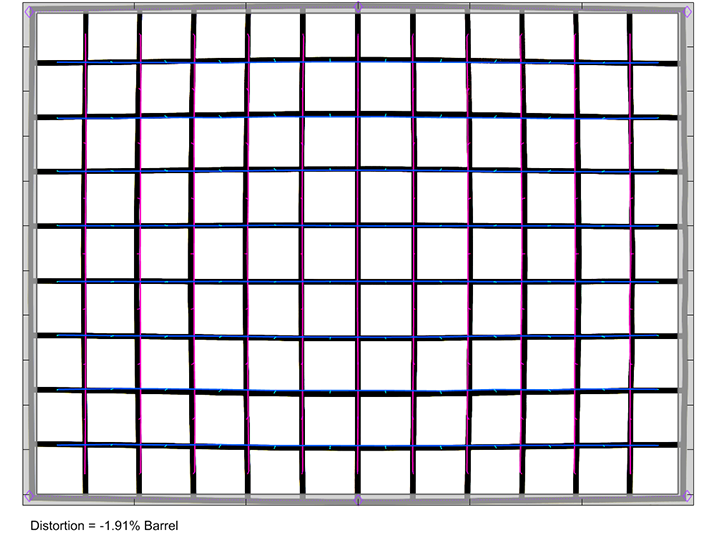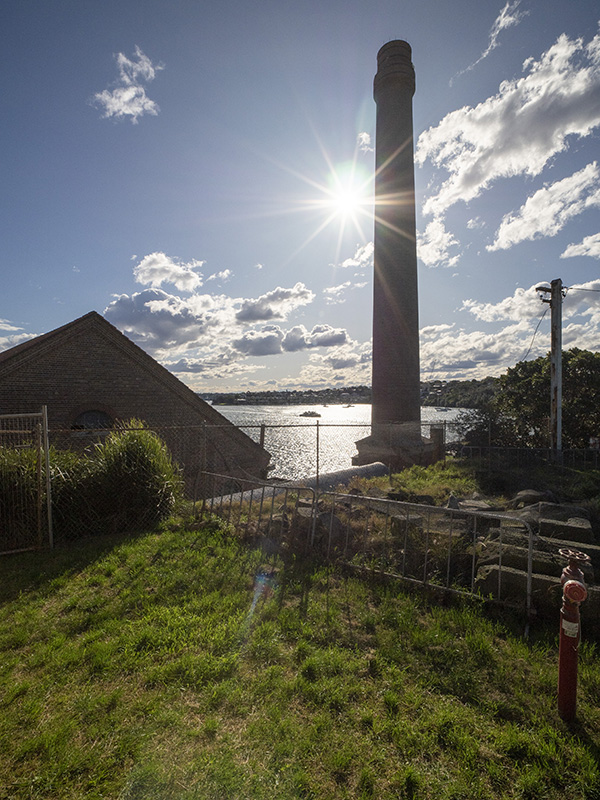|
Meike 8mm f/2.8 MFT - Review / Test Report - Analysis |
|
Lens Reviews -
(Micro-)Four-Thirds
|
|
Page 2 of 3

Distortion
As mentioned, the Meike 8mm f/2.8 doesn't feature electronic coupling thus there's also no image auto-correction available. However, the Meike lens does a good job when it comes to its native distortion characteristic anyway. It produces a medium barrel distortion of ~1.9%. While this is noticeable in certain scenes, it's not overly disturbing either.

Vignetting
The vignetting is reasonably well corrected, although some of this also relates to the "natural" vignetting that is associated with all ultra-wide lenses.
At f/2.8, the light falloff is clearly visible at 1.4EV (f-stops). Even so, this is far less compared to typical MFT lenses, which fully rely on auto-correction.
Stopping down gradually reduces the light falloff. Usually, you should not stop down beyond f/5.6 on MTF cameras and the vignetting stays at just under 1EV (f-stop) here.
Not brilliant but not terrible either, considering the focal length.

MTF (resolution)
The primary strength of the Meike lens - and probably also the biggest surprise - is its resolution characteristic. It is sharp. At all settings. And across the image field.
In fact, it is one of the sharpest ultra-wide MFT lenses that we've reviewed so far.
Despite the impressive MTF figures, it's worth noting that there's a bit of field curvature present at f/2.8, so it's still best to stop down to f/4.
The centering quality of the tested sample was good.
Please note that the MTF results are not directly comparable across the different systems!
Below is a simplified summary of the formal findings. The chart shows line widths per picture height (LW/PH) which can be taken as a measure of sharpness.
If you want to know more about the MTF50 figures, you may check out the corresponding Imatest Explanations

Chromatic Aberrations (CAs)
Lateral CAs (color shadows at the image borders) are very moderate, with an average pixel width of around ~0.4px across all relevant aperture settings.

Flare and Sunstars
Below is a rather extreme shot into the sun taken at f/5.6 - and some heavy post-processing to recover the shadows. There are a couple of observations here.
The lens can produce nice sun stars - and they are best at f/5.6. We've taken a couple of images of this scene, and the sun stars deteriorate at other aperture settings.
However, f/5.6 is basically the ideal setting for this lens, so that's perfectly fine.
You may also spot some ghosting, but this is hardly surprising given the extreme setup here. Generally, we'd say that the lens isn't overly prone to flare effects.
However, you may spot some veiling glare around extreme contrasts in some of our sample images shown on the next page.

|